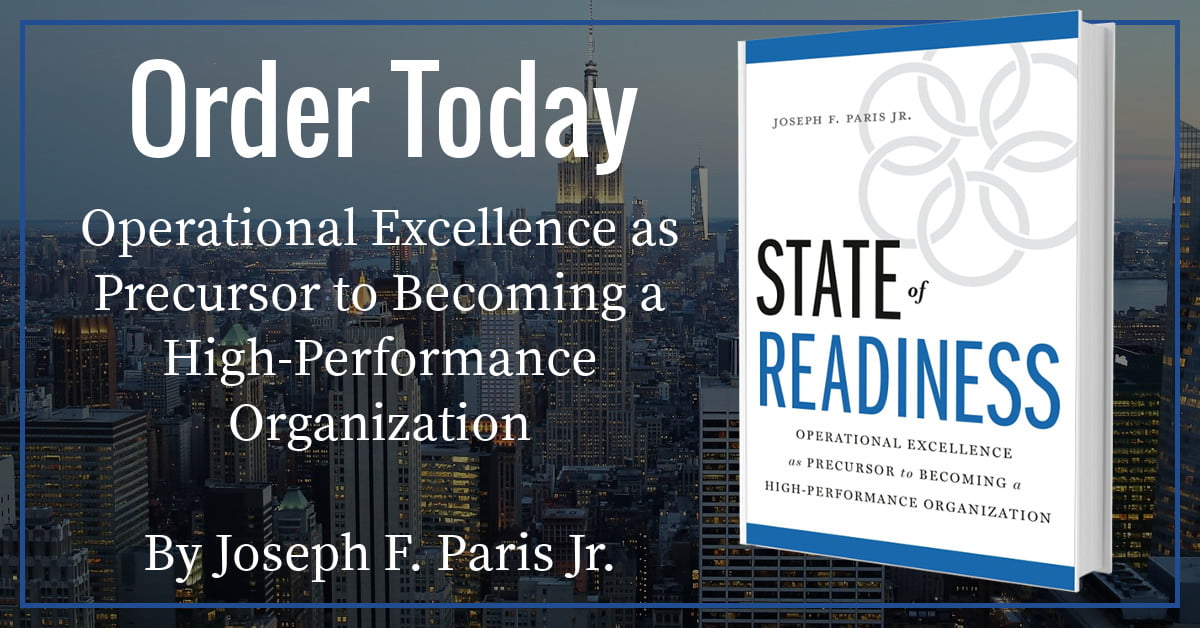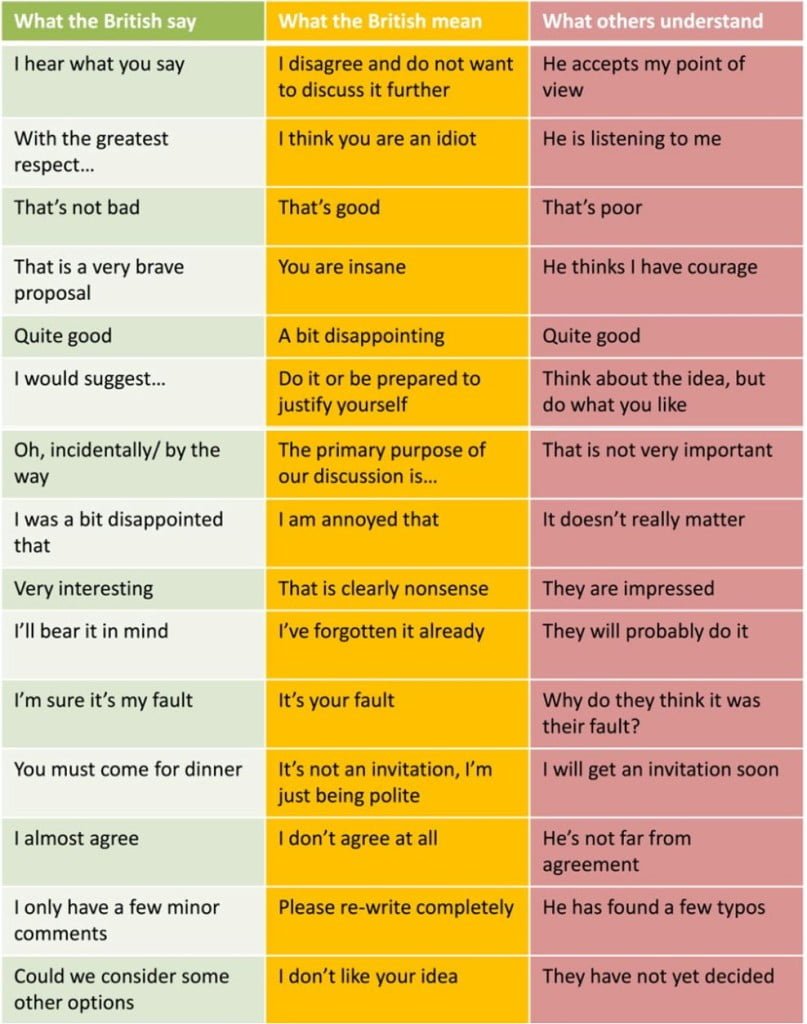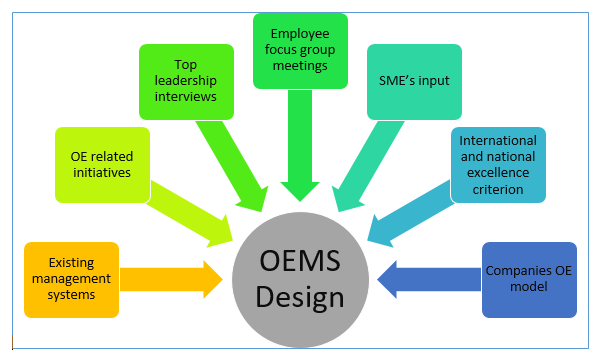Communication: I say Tomato, You say Pomodoro
Communication. We talk about how important it is. How critical it is to have in any endeavor in order to move the ball down the field and, ultimately, for success. Yet in almost every instance where there is failure, we can almost always trace back to one of the root-causes for the failure being a lack of communication – more specifically, effective communication.
Because there is almost always a lot of communication, the lack of communication as measured by sheer volume, cannot be the issue. We send emails by the droves until we reach the point where we are not really reading the communique, not really in the moment, but merely skimming the content – with the risk being that we are missing the context.
Or we are talking, trying to get a message across or expecting someone to comprehend what that message is, but not really understanding what the counterparty is saying in response (perhaps not really listening). Instead, we are focused on what we are saying, but possibly lacking the patience and empathy (at least at the moment) required for effective communication to occur.
Sifting through data, passing information, and speaking without listening is communicating, but it is it not effective communication. Effective communication is when people are mutually engaged, in the moment, and working towards an outcome that is clearly understood.
Effective communication is difficult enough when the parties are used to working closely together, where what is uncommunicated is often understood anyway. Spouses married for years can often have entire conversations without speaking a word. It gets more difficult when we have to communicate with others who are not so close. We have to be less assumptive and more detailed. And the complexity and resultant frustration of communication is almost overwhelming when cultural and language barriers are introduced – oftentimes exaggerated to the point of exasperation.
With the ever expanding globalization of companies and their corresponding multinational (even multi-continental) footprint, Continuous Improvement professionals find themselves increasingly having to deal with different cultures and under unfamiliar circumstances. Even when working on their home turf, the increase in immigration and temporary assignments from abroad require enhanced communication skills – specifically dealing with different language, mannerisms, customs, and cultures.
So how can we learn to effectively and efficiently deal with these variants? Before we can improve our communication skills, first, we need to understand what communication is, how we communicate, and the various purposes of communication.
What is Communication?
Communication is simply the act of transferring information from one place to another using a variety of means at our disposal. The most basic form of communication is verbal followed by written – with each form being facilitated and accelerated by the variety of electronic means that are available today.
We also have to pay particular attention to the words that might be used, the inflection and tone of their delivery, and the context and circumstances under which the communication is delivered – as these can all have a dramatic effect on how they are interpreted. And we also have to consider non-verbal means of communication, such body language where more of the meaning can be discovered.
For instance; ask two people, a man and a woman, how they might feel about a certain situation. When the man responds “Fine”, he means it’s acceptable. But when a woman responds “Fine”, it might mean acceptance by resignation.
Style Challenges
To examine how we communicate, we need to first look at the manners in which we communicate – the styles, if you will. Those who share styles will find fewer conflicts in communication than those who don’t, as opposed to those whose style is different.
So, when preparing to communicate, it is important to first assess your natural communication styles and compare them to the styles of those with whom you are communicating so as to be aware of the potential for conflict, its source, and how to overcome.
You can therefore adjust your communication strategy accordingly and better understand what is being communicated back to you.
High-Context versus Low-Context
High-Context communication relies heavily on assumptions. This works well when all of those involved in the communicating share a common culture; whether that common culture is based on national, racial, religious, geographic, or even company culture – anything that is common among the people communicating and which serves as the orientation of the communication.
Low-Context communication, on the other hand, is very specific and explicit. Those who communicate using Low-Context communication tend to assume nothing is assumed.
The conflict risk here is that the Low-Context communicator will feel a High-Context communicator is being aloof, disrespectful, and talking down to them. And the High-Context communicator will feel that the Low-Context communicator is disengaged, even incompetent.
Affective versus Neutral
Affective communication involves the expression of emotions as an integral component of the communication. Affective communicators are not afraid to show approval, excitement, boredom, disdain, anger, or any other emotion that they might feel. This is not to say they express it unchecked, but they certainly will let their counterpart know how they feel.
Neutral communication is largely devoid of any emotion. The Neutral communicator will listen intently, engage as appropriate, but won’t engage on an emotional level. This is not to say they will not experience emotion, but they feel the expression of emotion during communication is distraction or a sign of weakness.
The conflict risk here is that the Affective communicator will see the Neutral communicator as apathetic and, even though the Affective communicator will know what the Neutral communicator might think about a given subject, the Affective communicator will find it difficult to understand what the Neutral communicator feels – and what the Neutral communicator feels about a subject is important to the Affective communicator. Whereas the Neutral communicator believes that what is being felt is irrelevant and will tend to see the emotion of the Affective communicator as noise, nonsense, distraction, and weakness.

Sequential versus Synchronic
Sequential communication places an emphasis on time as a measurement or as a logistic, and the allocation is closely managed. For instance; meetings will start at a specific time and have a finite duration – and it is expected that everyone understands that and adheres to that.
Synchronic communication places an emphasis on time as a flow with the past leading to the present on the way to the future. As such, Synchronic communicators will have a tendency to look longer-term and might even seem impatient in (or even dismissive of) the “now” as they want to get to the future.
The conflict risk here is that the Sequential communicator will see a Synchronic communicator not adhering to times as disrespectful or a sign of incompetence for “wasting” time. And the Synchronic communicator will find the Sequential communicator as being cold, calculating, and lacking creativity and inspiration.
As an assessment of myself, for instance; I am a Low-Context commutator and tend to be very precise with my communications – and I expect precision in return. I am an Affective communicator and am not afraid to express what I feel about any given topic, and I expect others to be emotionally invested also. And I am Sequential communicator and always have a structure for communication prepared (or expected).
Because you have read this far, I bet you realized that about me by reading this article.
Language Challenges
If communication style is not challenge enough, what about the challenges that are introduced when multiple languages are involved? Certainly, instances when there is a lack of a common language between parties can be overcome by professional translators. Even “Google-Translate” does a fair job of translating to get a sense of what is being communicated if it is not in a language you understand (but I would never recommend it for official communiques).
Speaking louder doesn’t help overcome a language barrier – but speaking in simpler terms, more slowly, and deliberately certainly helps. Also, be sure to eliminate the use of slang and idioms as they can be misunderstood (or not understood at all) and result in confusion.
Using technical terms can also result in strained communications unless communicating with colleagues within the same industry where the terms tend to be universal.
Diversity (Cultural) Challenges
If assembling and conveying words, their meanings, and the context of the messaging did not make communicating difficult enough; we also have to consider the added complexity of diversity (cultural and otherwise) and the impact it has on communication.
The first rule for success when communicating in circumstances where diversity is a heavily weighted factor is “acceptance”. For instance, in India you might be distracted by people tilting their head side-to-side when engaged in conversation – or you might be at a dinner meeting where people are eating with their hands. In Europe, there is a lot of kissing and a lot of drinks flowing (at least by American standards). In Japan, the exchange of business cards (which is the kick-off of an introduction) is a sacred affair. In America, we like to start with some small-talk or a rhetorical question (such as, “How are you?”), but in Germany not so much. The list goes on and on, but you get the idea.
The countermeasure to this threat to effective (not to mention, harmonious) communication is to prepare in advance – to the extent you are able, discover what you can about the person with whom you are about to communicate. In the States, are they from New York or are they from California (makes a difference)? If they are from a country other than yours, but are living in yours now, for how long (this goes to understanding local customs)? And remember, just because they have a foreign last name doesn’t mean they are foreign, so don’t assume so and thus avoid a very embarrassing moment.
The most challenging situation you might face is when there are challenges to both Language and Culture, for instance; when Americans try to communicate with the English. The root cause of the problem is assumption – each side assumes the other knows English.
But in reality, the languages being spoken are American English and British English (the British like to refer to it as “Proper English” – and I would agree with them, but then we would both be wrong).
In addition to driving on the wrong side of the road, the British use strange words as compared to Americans such as: bonnet/hood, boot/trunk, crisps/chips, chips/fries, etc… Then there are the phrases which carry different interpretations such as:

As the saying goes; “America and Great Britain – Two peoples seperated by a common language.” It is important to note that the Scots speak Scotish and not English – and therefore I strongly recommended that you take the time to properly prepare and hire a translator if your plan is to communicate with someone from Scotland.
Body Language
Body language can be a very potent means of communication. Not to be confused with gestures (such as giving a “thumbs-up”, or waving hello or good-bye), body language is born of more primitive instinct and is more universal.
Some body-language basics, for your consideration (in each case, corrective action is required immediately).
Crossing Arms; If the person with whom you are communicating is crossing their arms they are demonstrating their opposition to what you are saying. They are protecting themselves by placing a barrier between you and them. This nature of the opposition can be defiance, defense, or serious disagreement.
Poor Posture; If the person with whom you are communicating is slouching or otherwise demonstrating poor posture, they are most likely bored, confused, or otherwise becoming disengaged with what is being discussed.
Lack of Eye-Contact; If the person with whom you are communicating is not making eye-contact with you, they are probably either embarrassed or ashamed. But be careful, they might not be embarrassed or ashamed of themselves, they might be embarrassed or ashamed of you (and what you might be saying). Also keep in mind that there is a fine line between making eye-contact (good) and staring or glaring (not so good). You want to let your counter-party know you are engaged and interested, but not a stalker or serial killer. A good rule to keep in mind is to always “smile with your eyes” when making eye-contact.
Looking Disinterested; If the person with whom you are communicating is looking disinterested, they are – and you need to discover why. Perhaps they don’t understand what you are saying and are tuning-out, or perhaps they understand too well and are bored, perhaps there is something that is on their mind and distracting them. Find out what it is and fix it.
The Power of Words and How We Deliver
The words we use, and the manner in which we deliver them, have immeasurable influence on their meaning and impact on the person with whom you are communicating. As such, we should use words and phrases wisely and in a measured fashion so as to accomplish their intent.
Social; This form of communication is largely casual and polite. It might take the form of idle chit-chat, rhetorical questions, lighthearted news and trivia. The vagueness of the communication will decrease as the familiarity of the persons communicating increase. It is not intended to serve any deep purpose or persuade another into some modification in belief or behavior.
Convey Knowledge; This form of communication (teaching, in all its forms) is intended to teach someone something. The person teaching needs to assess the latent knowledge of the person being taught (student) so as to start at the right level and not alienate the student. The teacher will need to continually reassess whether the student is receiving and absorbing the materials so that they can make adjustments to what is being taught as well as the speed and the depth of what is being taught. And the student needs to communicate how they perceive their knowledge is growing, what gaps might exist, and how to remedy those gaps.
Persuasion; This form of communication is the most difficult. Although it might have elements of “conveying knowledge”, its primary purpose is to convince another to modify their beliefs or their behaviors – not an easy task, and not to be entered into lightly. The probability of converting someone from one way of thinking to another will almost never be realized by assertiveness, but rather by creating a path of least resistance, a “pull” to that which is being introduced – to convert their “need” into a “want”.
Here, the savvy communicator will know that words that invoke negative emotions (such as fear or anger) will not yield as positive an outcome as quickly (if at all) as those that invoke positive emotions (such as desire or joy). The same with the manner in which the communication is delivered; is it in-person versus via email, or is there shouting versus calm, or is the timing a surprise versus planned, etc…
As an example of a phrase that will invoke negative emotions, and one that most everyone in Continuous Improvement has heard (but hopefully not used) is “the burning platform”. It is intended (mistakenly) to convey some sense of urgency – to serve as some form of motivation where everyone can focus and rally-round. I must confess, I have a particular loathing of this phrase, and I will tell you why (and why you should eviscerate it from your phrase-book from this day forth).
The phrase originates from the Piper Alpha oil platform catastrophe that occurred in the North Sea in 1988, in which 167 men were killed. The idea of using the phrase is that everyone will understand the gravity and urgency of the situation and, if not successful, everyone will surely suffer – therefore the expectation is that everyone will be motivated and focused on “fighting the fire”.
But here is the logical fallacy (appeal to emotion); unlike on a burning platform, there is no real threat to life. But the perpetrator of the argument (almost always someone in a leadership role) would like you to feel that there is so they don’t have to be bothered with the work that is required to put forth a real argument.
The reality is that putting forth this argument is a sign of weakness – a weakness in truly understanding the situation in order to put forth a reasonable argument to others, and a weakness in leadership in that they want to motivate by fear rather than fact. The result is that those who are subject to the communication, instead of unifying their focus and energy, divide their focus and energy between doing the work (fighting the fire) and looking for an out (escape and self-preservation).
A much better and more effective approach in communicating a critical need to others would be to:
- understand the nature of the challenge,
- formulate an approach,
- calmly and completely explain it all to the team along with the prioritization of the objective,
- why it is important,
- what everyone has to do to realize the objective, and
- then get on with it.
After all, everyone on the team is a professional, yes?
The Take Away.
We all have deadlines. Whilst Corporate might preach the importance of nurturing, coaching, mentoring, and teaching – and profess the lofty aspirations of getting everyone under one tent singing Kumbaya – the reality is that we got to get it done. That is on what we are measured and that is what matters.
As Continuous Improvement professionals and Change Agents, we know you have to effect improvement and change, and you have to effect change as quickly and as efficiently as possible. But remember, what works someplace might not work as a “cut and paste” someplace else. More than likely, you will have to understand the circumstances that exist at your assignment and the history of why things are the way they are before you start making the changes (otherwise, you will alienate everyone and fail). In the end, you will probably replicate an approach (taking an idea and adapting it in the new context) rather than duplicating.
A “standing order” in the United States Navy is; “It is not considered proper to change the set of the sails within thirty minutes of the relief of the watch.”
Think about it.
The sails were set the way they were set for a reason before you came on the scene. And although you are a seasoned professional, you don’t know what that reason might be when you first come on watch. The person who you just relieved is competent and has been doing the job as long as you have been; probably longer, since as a change-agent, you are new to the scene. It is a wise person who will take the time to understand how things came to be as they are before they make changes.
So, how can you accelerate the delivery of you communication and increase its effectiveness?
- Be completely aware of your communication styles; are you High-Context or Low-Context, are you Affective or Neutral, and are you Sequential or Synchronic?
- Take the time to assess the persons or people with whom you are going to communicate and determine their communication style. This way, you can formulate a communication strategy – making adjustments in the way you communicate to increase the probability of gaining and understanding and consensus.
- Understand what the language barriers and cultural differences might be and prepare accordingly. Building frustrations are counter-productive to realizing the end.
- Watch the communications that are occurring with body language. Observe the body language of the person(s) with whom you are speaking, and be aware what your own body language is saying. You will probably discover unspoken feelings, opinions, and truths.
- Measure your words. Slow down the speed of your speaking. Make sure to pause when you want a particular point to be absorbed. And monitor the emotional temperature and take action if you see the communication becoming too heated. Above all, be genuine, in the moment, and make sure your words have integrity – no artificial drama.
And always remember;
“God gave us two ears and one mouth – so we should listen twice as much as we speak.”
By Joseph F Paris Jr

Joseph Paris is an entrepreneur with extensive international experience. He is the Chairman of the XONITEK Group of Companies, an international management consultancy firm he founded in 1985; and the Founder of the Operational Excellence Society, a “Think Tank” dedicated to serving those interested in the disciplines of Operational Excellence. In addition, Paris serves on the Advisory Board of the System Science and Industrial Engineering Department at Binghamton University and on the Process Industries Division at the IIE. He is also on the Editorial Board of the Lean Management Journal and a sought-after speaker, guest lecturer and writer.
Connect with Paris on LinkedIn









